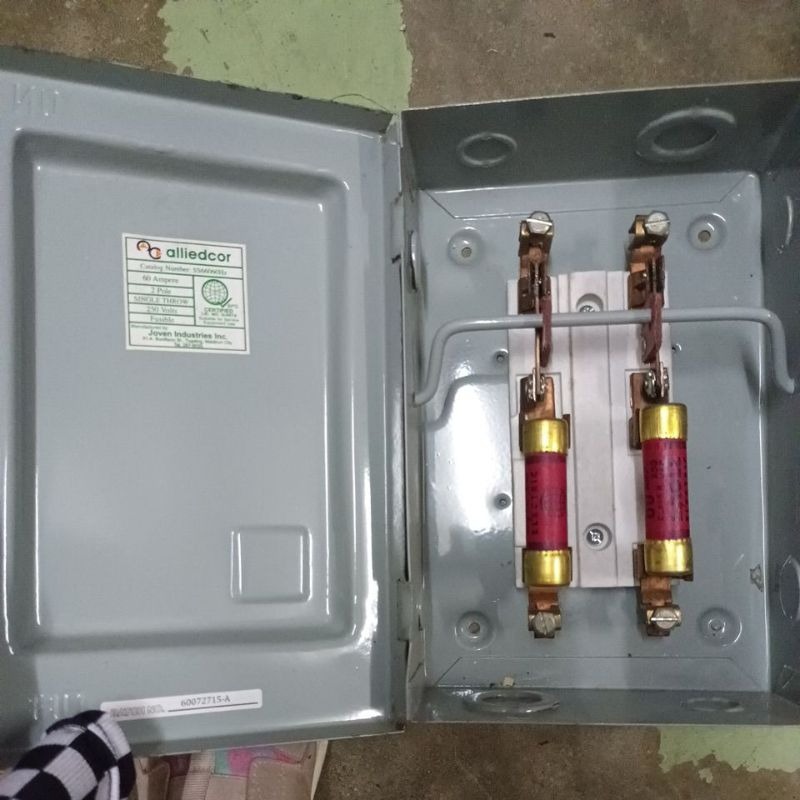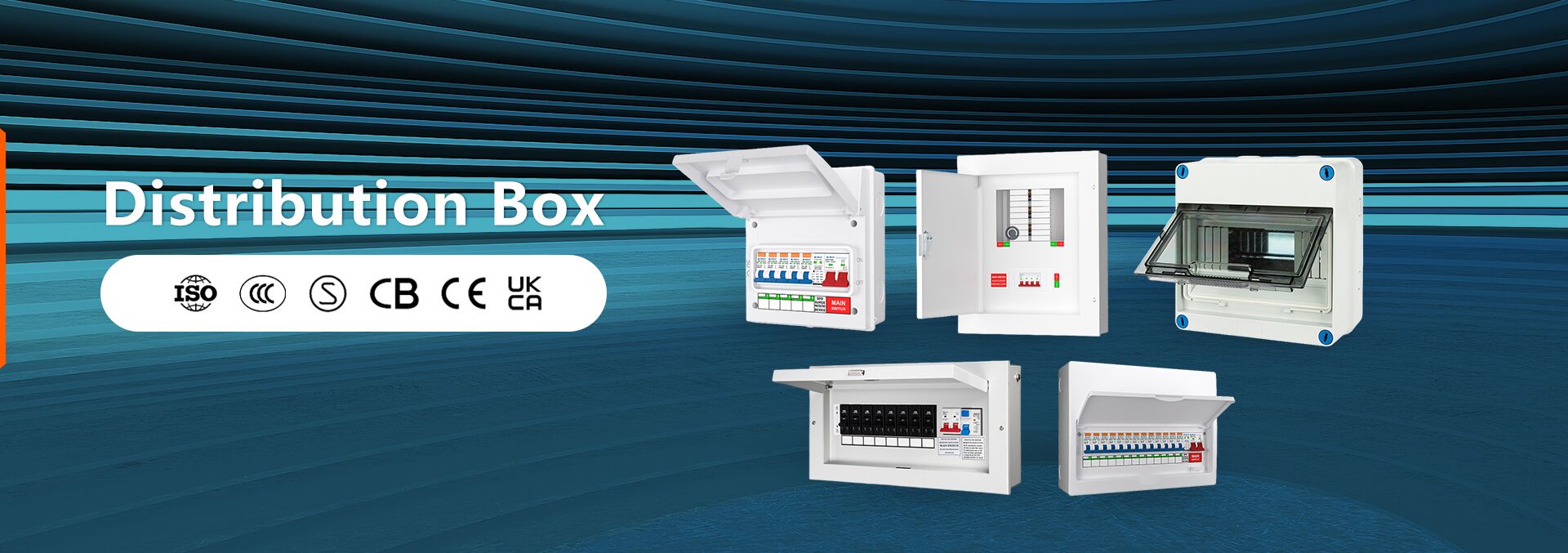
Key Differentiators: Traditional Fuse Box vs. Modern Electrical Distribution Board
Comparative Analysis: Fuse Box vs. Distribution Board
Laiwo Electrical: OEM/ODM Specialist for Compliant Consumer Units & Distribution Boards
|
Characteristic |
Traditional Fuse Box |
Modern Electrical Distribution Board (Consumer Unit/Panelboard) |
|
Primary Protective Device |
Fuses (Rewireable, Cartridge) |
Circuit Breakers (MCBs), RCDs, RCBOs |
|
Protection Type |
Basic Overload, Short Circuit (via fuse melting) |
Comprehensive: Overload, Short Circuit, Electric Shock (Earth Leakage), Surge, Arc Fault (recommended) |
|
Reset Mechanism |
Requires physical replacement of blown fuse |
Easy reset by flipping a switch |
|
Response to Fault |
Fuse melts, breaking circuit (one-time use) |
Circuit breaker "trips" (thermal/magnetic), RCD/RCBO detects imbalance (reusable) |
|
Shock Protection |
Limited/None (basic overcurrent protection only) |
Integrated and highly sensitive (RCDs/RCBOs) |
|
Fire Protection |
Limited; plastic/wooden enclosure can be a fuel source; no arc fault detection |
Enhanced: Non-combustible (metal) enclosure, RCDs for insulation faults, AFDDs recommended for arc faults |
|
Surge Protection |
None |
Integrated (SPDs) or easily added |
|
Enclosure Material |
Often plastic, bakelite, or wood |
Typically metal (non-combustible) |
|
Capacity for Modern Loads |
Low; not designed for high electrical demands of modern homes |
High; designed to accommodate increased electrical loads and numerous circuits |
|
Maintenance |
Higher effort; requires spare fuses and replacement knowledge |
Lower effort; easy resetting, clear fault indication |
|
Regulatory Compliance |
Generally non-compliant with modern electrical codes and safety standards; cannot be fitted in new installations |
Fully compliant with current electrical regulations (e.g., BS 7671:2018); often legally mandated |
|
Typical Application |
Older homes (pre-1960s, some up to 1980s) |
Modern residential, commercial, and industrial installations |
Both fuse boxes and distribution boards serve as the central hub for a property's electrical supply, controlling and distributing electricity while protecting circuits from power surges and faults.
Interestingly, the terms "fuse box" and "distribution board" are often used to describe the same type of equipment, but they represent different aspects and generations of electrical distribution systems. According to Wikipedia, a distribution board is also known as a "panelboard, circuit breaker panel, breaker panel, electric panel, fuse box or DB box."
The difference between a fuse box and a consumer unit lies mainly in their technology, safety features, and ease of use, although they serve the same fundamental purpose of distributing electricity in a home and protecting circuits from overloads.
Learn More:
What is the difference between SPN and TPN distribution board
Your Definitive Guide to TP&N Distribution Boards
EV Charger Consumer Unit Guide
How to Wire a Garage Consumer Unit: A Comprehensive Guide
Garage Consumer Units - Ultimate Guide

A fuse box represents an older generation of electrical control units, historically known as a fuse board or, colloquially, a "consumer unit" in its early contexts, serving as a central point for both electricity distribution and circuit protection.
A fuse box is a type of electrical distribution board that contains fuses as protective devices. The fuses interrupt the circuit by melting when there is an overload or short circuit, protecting wiring and appliances.
Learn More: What is a fuse box?
Fuses

At the heart of a fuse box are its fuses, which serve as the core protective elements. These are typically thin metal conductors, often referred to as fuse wires, or cartridge-type elements specifically designed to melt and open the circuit when an overcurrent or short circuit occurs. Each fuse is precisely rated according to the size of the cable it protects, ensuring that the cable does not overheat and burn under fault conditions.
Busbars
Usually consisting of copper strips, to which the incoming main supply conductors are attached. These busbars then connect to the individual fuses, facilitating the distribution of power to various branch circuits throughout the property.
Enclosure
Early fuse boxes were commonly constructed from materials such as wood or brown-black bakelite. The enclosure's fundamental purpose was to securely hold the fuses, protect them from accidental contact by people or objects, and safely contain any energy released, such as arcs or sparks, when a fuse "blows".
At its core, a distribution board, also frequently referred to as a panelboard and distribution board, functions as a protective and distributive hub for electrical circuits. Imagine it as the electrical system's command center, receiving power from the source and meticulously dividing it among various branch circuits. This segregation is crucial for safety, allowing for isolation during maintenance or faults, and preventing overloads that could lead to hazardous situations.
But what is the distribution board in technical terms? It's an assembly of protective devices (like circuit breakers or fuses), switching devices, and busbars, all enclosed within a robust housing. These components work in concert to safeguard electrical installations and ensure continuity of power supply.
Learn More: Distribution Boards: A Comprehensive Guide for Professionals and Consumers
Enclosure
The housing that protects the internal components from environmental factors and physical damage. It also serves as a safety barrier to prevent electrical contact.
Busbars
Conductive bars that serve as the main power distribution points within the board. They facilitate the flow of high currents and provide connection points for protective and switching devices.
Miniature Circuit Breakers(MCBs)
They are designed to automatically switch off a circuit if a fault, such as an overcurrent or short circuit, is detected. A key advantage over fuses is their reusability; they can be easily reset by flipping a switch after the fault is cleared, providing continuous protection.
Main Switch Disconnector
Controls the entire supply
Residual Current Devices (RCDs)
Residual Current Devices (RCDs) are life-saving safety switches engineered to detect minute imbalances in electrical current, commonly known as earth leakage. Upon detection, they rapidly disconnect the electricity supply, often within milliseconds. Their primary purpose is to prevent fatal electric shocks to individuals.
Neutral and Ground bars
neutral and ground bars are conductive metal bars within the distribution board where the white neutral wires and bare copper or green insulated grounding wires connect. The neutral bar provides a return path for electric current, completing the circuit, while the ground bar ensures a safe path for fault currents to earth, preventing shock hazards.
The traditional fuse box provides basic protection primarily against overloads and short circuits. Its protection mechanism relies on the physical melting of a fuse wire, which is a one-time event requiring replacement after activation. This offers a reactive, single-point protection.
The modern distribution board offers comprehensive and multi-faceted protection against a wider array of electrical hazards. This includes protection against overcurrents (overloads and short circuits) via resettable circuit breakers, electric shocks and earth leakage faults via Residual Current Devices (RCDs) and Residual Current Breakers with Overcurrent (RCBOs), and transient overvoltages via Surge Protective Devices (SPDs).
The traditional fuse box inherently lacks the advanced safety features found in modern systems. Older installations may not be properly grounded, which significantly increases the risk of electric shock. Furthermore, some designs may have exposed live parts, posing a direct contact hazard. The plastic or wooden enclosures commonly used in older units can themselves pose a fire risk if internal electrical faults occur, acting as an additional fuel source and potentially exacerbating a hazardous situation.
Conversely, the modern distribution board incorporates significantly enhanced safety features. These include built-in trip switches (circuit breakers) that automatically disconnect power upon fault, highly sensitive RCDs for critical shock protection, and often factory-fitted SPDs for surge protection. Crucially, modern units are required to be manufactured from non-combustible materials, such as metal, to contain any electrical fire within the enclosure and prevent its spread. They are also designed with "dead fronts" to prevent accidental contact with live internal components, a key safety improvement. Moreover, Arc Fault Detection Devices (AFDDs) are recommended for additional fire protection specifically against dangerous arc faults that might not be detected by other protective devices.
Traditional fuse boxes were designed for the significantly lower electrical loads prevalent in homes before the 1960s. They are simply not equipped to handle the high electrical demands of modern homes, which now include numerous high-power appliances, sophisticated HVAC systems, and a proliferation of smart home devices and electronics. Their amp ratings are limited and not easily adjustable to accommodate varied loads.
In stark contrast, modern distribution boards are specifically designed and better equipped to handle the higher electrical demands of contemporary living, accommodating the growing power requirements of modern devices and appliances. They can be sized for substantial capacities, ranging from 200 to 400 amps for larger homes, and are capable of supporting a greater number of individual circuits. This allows for superior load management and effectively prevents overloads that would overwhelm older systems.
The traditional fuse box requires the physical replacement of the fuse wire after each trip or blow. This can be highly inconvenient, especially if spare fuses are not readily available, if the user is unfamiliar with the correct fuse rating, or if the replacement process requires tools and a degree of electrical knowledge. Such requirements often lead to prolonged downtime and user frustration.
The modern distribution board offers significantly improved user convenience. Circuit breakers can be easily reset by simply flipping a switch back to the 'on' position, immediately restoring power once the underlying issue (overload or short circuit) has been resolved. Modern units are generally less demanding in terms of maintenance, with clear trip indicators simplifying fault identification and reducing the need for specialized knowledge to address common issues.
Traditional fuse boxes were the standard electrical control units prevalent in homes built from the 1940s through the mid-1960s.
In residential settings, modern consumer units are the established standard. For commercial and industrial applications, larger installations commonly utilize three-phase supplies, with distribution boards featuring twin vertical rows of circuit breakers.
While older fuse boxes are not necessarily illegal to possess, they are no longer considered safe for modern homes and typically do not meet current building codes and safety standards.
In contrast, modern distribution boards are designed and manufactured to comply with the latest electrical safety standards and regulations, which are often compulsorily enforced by law in many countries.
The transition from traditional fuse boxes to modern electrical distribution boards represents a profound evolution in electrical safety and power management. While fuse boxes offered basic overcurrent protection through single-use, replaceable fuses, modern distribution boards provide multi-layered, comprehensive protection against a wider array of hazards.

When investing in electrical protection devices such as Metal Consumer Unit, Metal Garage Unit/EV Charging Unit, make sure that you always get help from a reliable manufacturer/supplier such as laiwo. laiwo electrical is a one-stop solution for all your electrical needs including surge protectors, circuit breaker, earth leakage protection devices and switched sockets. If you have additional questions or need assistance, please feel free to contact the customer service team. Give us a call and we'll have a team of professionals answer your questions!
Source:
What is a Circuit Breaker Panel? - KDMFAB
What function does a fuse box have? - Quora
What is the function of a distribution board (DB)? - Goldmedal
The FuseBox Phenomenon: Why Electricians Are Switching to This Consumer Unit Brand
Fuse Box vs. Breaker Panel: What's the Difference? - Basset Heating & Air Conditioning
4 Crucial Advantages of Circuit Breakers over Fuse Boxes - Calgary Electricians
A Comprehensive Guide To Your Home's Electrical Panel
INQUIRY NOW